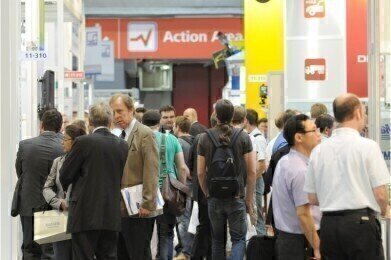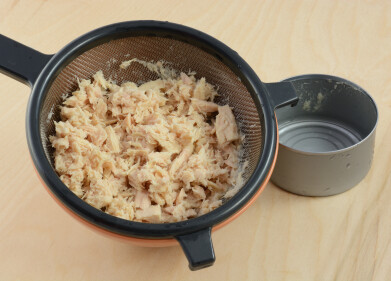Environmental Laboratory
Sensor + Test 2012
Mar 22 2012
The 19th international trade fair for sensor, measuring, and testing technology, the SENSOR+TEST, will be held from 22 to 24 May 2012 at the Nürnberg Exhibition Centre. The SENSOR+TEST is a must-go venue for developers and engineers from all industries. As Christoph Kleye, the chairman of the Exhibition Committee puts it, “Without the latest sensor and measuring technology, you can’t go on optimizing devices, machines, systems, or processes and without the latest testing technology, you can’t keep up with the ever increasing quality standards. There is no comparable platform in Europe, where innovative users meet so many innovative suppliers of sensor, measuring, and testing technology.”
The AMA Association for Sensor Technology, the host organization, is counting with about 550 exhibitors and approximately 8,000 visitors from all over the world.
Chemical Sensors at Sensor 2012
The SENSOR+TEST always has a broad spectrum of sensors for determining gas concentrations. Also, numerous wet chemical sensors are being offered for measuring pH values or conductivity, for example. Many advanced announcements for the SENSOR+TEST point to spectrometric measuring processes. Microsystem technology has made small, inexpensive, and flexibly designed spectrometers possible.
A Dutch supplier is offering a choice between higher throughput or higher resolution. With the aid of a USB converter, 16 spectrometers can be linked via Ethernet. Configuration and signal evaluation is performed by browser software. A product family of pyroelectric detectors works with Fabri-Pérot filters. Infrared wavelengths between 3 µm and 10 µm can be attained with three different models. This high spectral resolution ensures good signal-to-noise ratios. A standardized measuring cell for photo-acoustic spectrometry can be custom tuned for a wide variety of gases and applications. Multichannel gas sensors, equipped with PbSe detectors and filters with an FWHM (full width half maximum) of 140 nm, designed for hydrocarbons, carbon dioxide, and carbon monoxide are also available – cooled if necessary. An analyzer module for nitrogen-dioxide, with its global warming potential as occurs in vehicle exhaust emissions, uses a quantum cascade laser with an extremely narrow-bandwidth emission to achieve a high selectivity. Tuneable DFB lasers can be utilized for detection of various gases in the infrared range between 3.0 µm and 3.6 µm. Narrow bandwidths and good side-lobe suppression provide high selectivity here. Specialized for carbon dioxide, NDIR measuring cells make use of the two-beam principle. The standard measuring ranges are at concentrations of 2% to 30%.
Based on the current-limiting principle, zirconium-oxide sensors using a solid-state electrolyte are integrated in oxygen measuring cells with a long service life. The low operating temperature of 400 °C provides a low energy requirement. For application in medical, food, and refrigeration technologies, devices with measuring ranges from 25% to 95% are available. Numerous suppliers of catalytic gas sensors for combustible or toxic gases can also be found at the SENSOR+TEST. A Russian supplier, for instance, offers sensors on a membrane platform using MEMS. Sensors from China for toxic gases, such as sulphur-dioxide, chlorine, or ammonia, are also being presented. This is all about multidimensional evaluation of a sensor signal in relation to field effects, ion emissions, and catalytic/thermal conductivity changes upon heat pulses. Steps, such as sampling, filtration, and concentration using nanostructures will be demonstrated at the fair.
Sensors for more down-to-earth applications, such as determination of pH values, redox potential, and conductivity will be shown in Nürnberg. A measuring system for all common pH/redox probes with their various plug-in heads provides impedance conversion in the power chord for the high-impedance output signals. The data of linearization characteristics are stored in the connector, allowing easy configuration of a multichannel measuring system with different sensors – for instance for lab applications. Coming from Russia is a device for analyzing water samples consisting of up to 20 substances, including metals, nitrates, oils, etc.
Climatic Parameters at Sensor 2012
This section deals primarily with air quality and moisture in gases. Sensors for particle density, smoke detection, barometric air pressure, or solar radiation can all be viewed at the SENSOR+TEST.
The air quality in buildings, offices, or school classes cannot be controlled via the carbon dioxide content alone. To measure the concentration of volatile organic compounds (VOC), control modules are available now with a remote sensor element that can be mounted directly in the ducts of air-conditioning systems. A combined module measures the concentration of carbon dioxide as well as the selected VOC markers, controlling the airflow in heating, ventilation, and air conditioning (HVAC) of offices or living quarters. This not only ensures a high air quality, but also the energy efficiency of HVAC systems. Another supplier offers a special two-channel DNIR module to measure carbon dioxide in buildings. The stability over a period of ten years is better than 5% FS. A function for regular autocalibration is integrated.
Besides air-quality monitoring, the measurement of humidity is one of the major topics in the area of climatic parameters at the SENSOR+TEST. An extremely small digital combination sensor for temperature and humidity was considerably optimized for temperature compensation and now operates in a range of 5 °C to 60 °C with a measuring accuracy of ±0,3 K. Also from Korea are completely compensated humidity sensors with threshold monitoring. Dew-point mirrors are used for particularly precise measurement of humidity. These are available as laboratory devices with controlled sampling and flow measurement or plug-in modules for climatic chambers – with calibration certificates if required. A patented measuring principle for precision measurement of capacities, in the range of fF to µF, can be used to highly dynamically evaluate capacitive humidity sensors up to 0,05% RH. In conjunction with reliable temperature sensors, RISC controllers, and polynomial linearization, very precise measurements of relative humidity and computation of the dew point or absolute humidity can be attained.
Digital Edition
AET 28.4 Oct/Nov 2024
November 2024
Gas Detection - Go from lagging to leading: why investment in gas detection makes sense Air Monitoring - Swirl and vortex meters will aid green hydrogen production - Beyond the Stack: Emi...
View all digital editions
Events
Dec 02 2024 London, UK
Dec 03 2024 Dusseldorf, Germany
Dec 11 2024 Shanghai, China
Jan 12 2025 Abu Dhabi, UAE
Jan 14 2025 Abu Dhabi, UAE














.jpg)




